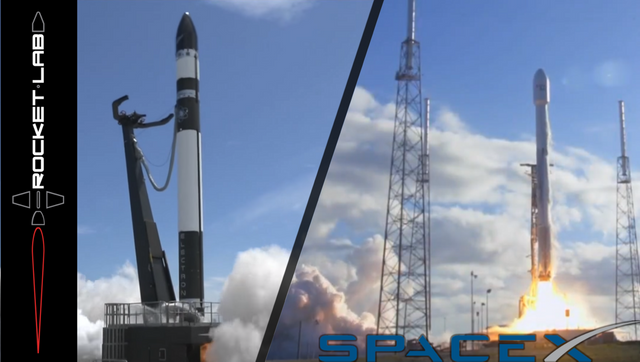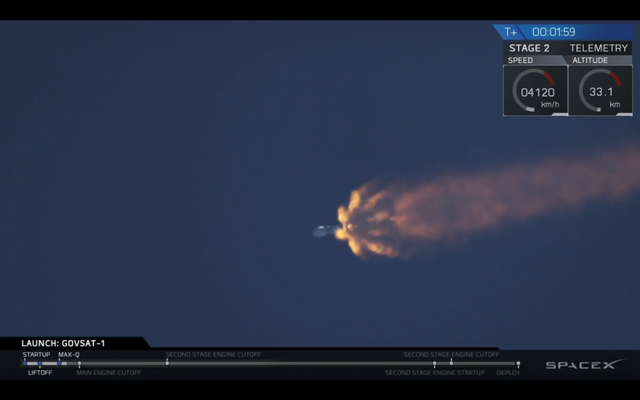Surprise hitchhikers aboard Electron, and other space news.
Nine days ago I made this post, highlighting the newest entity capable of sending spacecraft to low Earth orbit (LEO). It was only the second ever launch for the small startup company, Rocket Lab, but it managed to send three satellites, for two operators, to space to image the earth and provide communications. But, as it turns out, two previously unknown craft were also onboard. These were revealed on the 23rd and 24th of January.
On the 23rd, the company released a statement to reveal that one of the secret payloads was a small kicker stage was used to place the two Lemur-2 cubesats into circular orbits, unlike the other Dove satellite that was onboard and ended up in an elliptical orbit. This new kicker was experimenting with a new, greener monopropellant, as opposed to the usual hydrazine, which is extremely corrosive and dangerous. This stage also comes with avionics and communications, but also uses its own cold gas reaction system to steer itself in space. For this test, the stage remained in orbit, but Rocket Lab has stated that in the future they will deorbit themselves to limit debris around the Earth, also known as the Kessler Syndrome.
During this announcement, they disclosed five objects to be orbiting the planet, but that turned out to be a lie. Military tracking stations found a sixth, and the company released another statement the next day, revealing the last secret object. It turns out, there is now a disco-ball orbiting the earth at around 500 kilometers. It is a small geodesic sphere build from a carbon-fiber which has 65 faces, all of them plated with a highly reflective material. It is called the Humanity Star, a very fitting name, and is said to be the brightest object in the night sky, and it should be visible from everyone around the globe at some point.
So look up and wish on this permanent shooting star!
The next story is a follow-up from this post I made yesterday. You should read it to get more information on the payload, which is secure communications satellite, built by GovSat, a joint public-private venture between Luxembourg's government and the SES, a world renowned satellite operator, with the largest fleet of craft, orbiting in a geostationary transfer orbit (GTO), which is at an altitude of around 36,000 kilometers.
After replacing a sensor in the second stage yesterday, the rocket lifted off today. Though this launch wasn't nearly as spectacular as others, as the lifter did not land back, it was interesting due to the information shared during the stream. It didn't land back at the launchpad because the payload was heavy and it wasn't possible to leave enough fuel to perform the boostback burn, and it couldn't land on the drone shit SpaceX has in the Atlantic, because that is being prepared to receive the center core of the Falcon Heavy, which is due to perform its maiden flight from Launchpad 39A, on February 6th.
Anyway, some cool info I learned during the event. As you can see from the soot and paint loss, the first stage has been flown before, on May,1st of last year. You'd expect the whole rocket to be a bit burned up due to flying against the flame during reentry, or if the flame doesn't reach as far, just the bottom part. But what you see is the lower and upper parts of the stage are burned, but not the middle. This rocket uses RP-1, a rocket variant of kerosene and liquid oxygen, which means it's cold, but SpaceX takes it even further, bringing its temperature even lower than industry standard in order to increase efficiency and density, thus carrying more. Because of that, that area doesn't get hot enough to get burnt.
Also, I learned that the rocket ends its fueling cycle very close to moment T-0 as to keep the fuel from heating up and evaporating on the launchpad; 3 minutes before launch the rocket was still fueling. Also, in the last part of terminal count, the vectoring of the engines is tested to ensure steering works as intended. Another operation that is performed is chilling the engines and piping so that when it starts flowing, it doesn't turn into gas upon contact and cause a rupture, which would cause a catastrophic mission failure. By the way, this cooling also happens while in flight for the engine of the second stage.
If you wish to learn more about the payload read my post from yesterday. Additionally, you can watch the full livestream below.
What are your thoughts on these stories? Did you expect even more from this new arrival in the space industry? Did you find the information about Falcon 9 new and interesting? Share below, along with any feedback you might have. It is greatly appreciated!
Thank you for reading, and keep on steemin'!
(clicking any image will take you to its source)



@sebi99p, great post! You should really join @steemstem's community since you're into science!
Thank you! I'll have a look at that!
impressive article so excited about space
Thank you!
Then stick around, I post space related stuff pretty often ;)
Fascinating stuff! Then again, science is awesome to begin with...
Hey, it's not like it's rocket science! Oh... wait ...
Glad you enjoyed!
Interesting article! :D
Thanks! Glad you liked it!
I love that you have posts about space and technology!
Definitely following from now on :)
Thank you! Yea, I mostly post space stuff, some thoughts on games and the occasional political post :)
Glad you're joining around!
Wow! Interesting! 🥂
Glad you found it so!
Un articol foarte bun! 👌🏽
Multumesc!